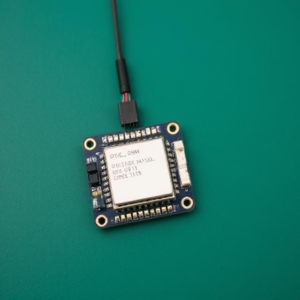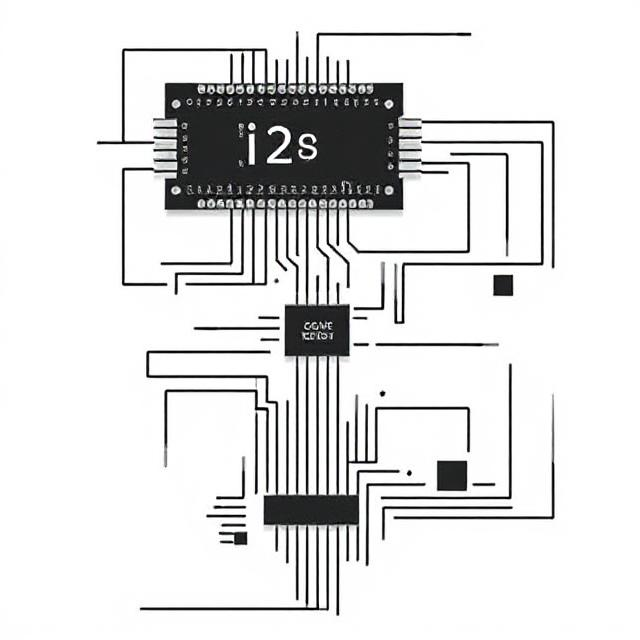Introduction
In today’s interconnected world, cellular technology plays a crucial role in enabling communication and data transfer. One of the key components of this technology is the GSM module, which facilitates wireless communication through cellular networks. Whether you are working on an IoT (Internet of Things) project or building a simple communication system, understanding GSM modules is essential for integrating mobile connectivity into electronic systems.

What is a GSM Module?
A GSM (Global System for Mobile Communications) module is a hardware component that allows electronic devices to communicate with cellular networks. It enables functions such as sending and receiving SMS (Short Message Service), making voice calls, and even accessing mobile data. GSM modules are typically used in applications where remote communication or monitoring is needed, including in smart devices, security systems, and embedded systems.
The GSM module acts as an interface between the device and the mobile network, allowing you to send and receive data using a SIM card (Subscriber Identity Module) connected to the module. In short, it turns your microcontroller or other device into a cell phone that can communicate with mobile networks.
How Does a GSM Module Work?
A GSM module connects to the cellular network by inserting a SIM card, which allows the module to authenticate and access the network. Here’s a simple breakdown of how it works:
-
SIM Card Insertion: The module needs a SIM card (the same type used in mobile phones) to access cellular networks.
-
Network Connection: When powered on, the GSM module communicates with the nearest cellular tower to establish a connection. This process involves registering with the network and obtaining an IP address.
-
Communication: Once connected, the module can send and receive data. This could include SMS messages, voice calls, or Internet data (for GPRS/EDGE-enabled modules).
-
Microcontroller Interface: Most GSM modules communicate with microcontrollers (like Arduino, Raspberry Pi, etc.) through serial communication (UART, USB, or SPI). The microcontroller sends commands to the GSM module to initiate actions like sending an SMS or making a call.
Types of GSM Modules
Several types of GSM modules are available, with different features and capabilities. The most common include:
1. SIM800 Series
-
Widely used in various applications.
-
Supports SMS, voice calls, GPRS, and Internet connectivity.
-
Commonly used in IoT projects due to its compact size and low power consumption.
2. SIM900 Series
-
Older but still widely used.
-
Supports SMS, voice calls, and data transmission.
-
Ideal for smaller or simpler applications.
3. SIM5320 Series
-
Supports 3G networks, offering higher data transfer speeds than the older GSM modules.
-
Used for applications requiring higher bandwidth, such as video streaming or high-speed data transfer.
4. Quectel EC25
-
A 4G LTE module, designed for high-speed data transmission and IoT applications that need reliable, fast communication.
Key Features and Benefits of GSM Modules
-
Wireless Communication: GSM modules provide a simple way to integrate cellular connectivity into projects without the need for a physical wired connection.
-
Remote Communication: Useful for remote monitoring and control applications, such as in home automation systems, vehicle tracking, or environmental monitoring.
-
SMS and Voice Calls: These modules can send text messages or make voice calls, which can be very useful for notifications or alert systems.
-
Internet Access: With modules like GPRS, EDGE, or 3G, GSM modules can provide low-cost Internet connectivity for applications requiring data transmission.
-
Low Power Consumption: Most GSM modules are designed to work efficiently with minimal power usage, which is essential for battery-powered applications.
-
Global Coverage: Since GSM networks are widespread globally, these modules can be used for international communication, making them ideal for applications that require broad reach.
Applications of GSM Modules
1. IoT (Internet of Things) Devices
-
GSM modules play a key role in IoT devices that require remote communication. For example, you could use a GSM module to monitor and control smart home appliances remotely.
2. Security Systems
-
GSM modules are commonly used in alarm systems, where they send SMS alerts to users or authorities in the event of a security breach.
3. Vehicle Tracking Systems
-
GSM modules can be used to track the location of vehicles and send updates via SMS or data to a central server.
4. Remote Sensing and Monitoring
-
For environmental or industrial monitoring, GSM modules can send sensor data (e.g., temperature, humidity) to a remote server via SMS or Internet.
5. Healthcare Applications
-
GSM modules are used in health monitoring systems to send updates about a patient’s status, such as sending an emergency alert via SMS.
Challenges and Considerations
-
Network Coverage: GSM modules rely on cellular networks, so poor network coverage can affect performance. It’s important to ensure that the module is used in areas with strong signal reception.
-
Cost of Data Plans: Depending on the application, using GSM for data transmission might incur costs for mobile data or SMS services, so it’s important to consider these when planning a project.
-
Power Consumption: While GSM modules are generally power-efficient, continuous use for data or voice communication can consume significant amounts of power. Power-saving modes or proper battery management are important for long-term operations.
Summary
GSM modules are essential components for integrating cellular connectivity into electronic systems. They enable communication via SMS, voice calls, and data transfer, making them ideal for applications in IoT, security systems, and remote monitoring. By inserting a SIM card, these modules can connect to cellular networks and interface with microcontrollers for easy integration. Despite some challenges like network coverage and power consumption, GSM modules remain a powerful tool for adding wireless communication to a wide range of devices.











